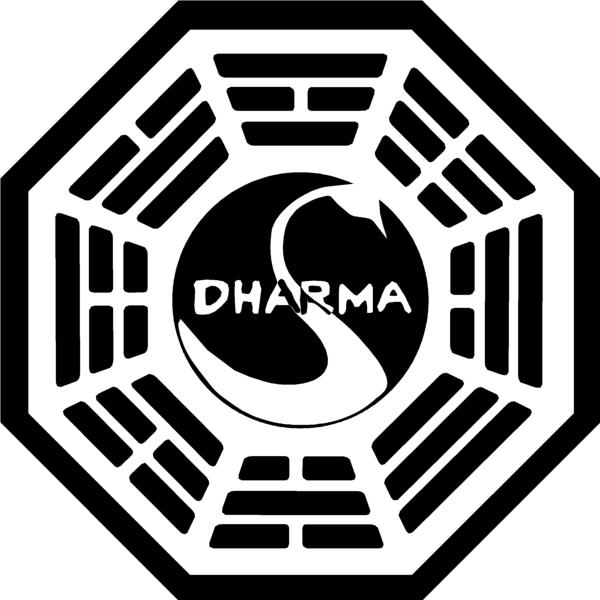My opening post focused on the subject of alternate realities. I have several theories about how we access, or at least glimpse, alternate realities. While I may have adapted bits and pieces of these theories from other sources, it was done so subconsciously, so do not expect citation. This piece is based on personal experience and reflection; it is meant to be thought provoking, not definitive. My interpretation of the theory of alternate realities is continually evolving.
With that out of the way, let's go straight to the meat of this post: dreams.
Several theories exist about why we dream. Freud theorized that dreams provided insight in our personalities and unspoken desires. Dreams allow our darkest and deepest fantasies to play out in a somewhat safe environment. Effectively, dreams provide us with a personal virtual reality simulator. Much of his work involved symbolism and seemed to focus on sex... Whether he was right or wrong is not up for debate in this post. Freud is not the subject here, merely an example.
Others speculate that dreams help regulate mental health by incorporating new information into your brain. Essentially, dreaming allows our minds to weave the day's events into the grander tapestry of our lives. Imagine that your brain is a hard drive; dreaming is daily defragmentation. There are variations of this concept that place more emphasis on certain aspects of body or brain function, speculate how external stimuli affect the dream, or that mix in some elements of Freud's psychoanalysis.
But what if dreams, or at least some dreams, are something else entirely?
Sifting Through Reality
Frequently Visited Realities
Monday, May 15, 2017
Monday, February 11, 2013
In Defense of Jar Jar Binks
| Meesa notsa bad guysa |
 |
| Lucas with his security detail |
Jar Jar was immediately identified as a racist character. His physical mannerisms and voice are cited as evidence of Lucas' intent to depict Gungans as African Americans and, by extension, African Americans as dimwitted and lazy. These accusations have baffled me from the get go as nothing about Jar Jar or any other Gungan comes close to indicating that they are in fact meant to be depictions of any human race.
In reality, these individuals are projecting their own stereotypes or in some cases what they perceive to be the stereotypes that others hold onto the characters. They are applying their own cultural bias onto a fictional character whose only physical similarities to humans are its opposable thumbs and bipedal gait. A virtually identical situation occurred when Paramount released the second Transformers movie.
Ahmed Best, Jar Jar's voice actor, is an African American. The claims of racism suggest that everybody involved with the character's portrayal - especially his voice actor - was complicit in the offense. Needless to say, this irritated him significantly.
"Not only do I think that has no validity, I think it's really stupid for anyone to put their own prejudices and their own homophobia on a complete fantasy movie," Best says.
 |
| Imagine the controversy if this made it into the final cut... |
 |
| Better vocalization than Jar Jar have I? |
 |
| Especially the characters that use a fake British accent for no discernible reason |
Dismissing both the allegations of racism and the troubles with his speech, Jar Jar's simplistic nature is also a cause for anger. It is clear that Lucas played up the Gungan's slow nature and clumsiness in an effort to create humor. We see this time and time again throughout The Phantom Menace. The other characters, Jedi and Gungan alike, treat him like an utter imbecile throughout the film. His people shunned him. The Jedi and Naboo relegate to hanging out with the not-yet-active droids on the Naboo ship. Not even Anakin puts much faith in him as he warns Jar Jar to stay the hell away from his podracer only to see the Gungan get zapped by the energy binder. The latter two examples demonstrate Lucas' attempt at slapstick humor while the first is something more, whether Lucas realized it or not. Kicking Jar Jar out of Gunga City was one of the brightest moves in the film...
A New Hope, the first Star Wars movie ever released, utilized the narrative of the hero's journey. The story focused on Luke Skywalker as an everyman character, somebody the audience could relate to. He wasn't a soldier or a pilot or even a Jedi knight. He was simply a boy living with his aunt and uncle farming moisture on a desert planet with two suns. Following a fantastical turn of events that he played no role in, he meets two offworld individuals (C3PO and R2D2) who lead him on a quest. His journey takes him on a grand star ship and across the galaxy where he ultimately plays a critical role in a major battle. The film ends with Luke being recognized for his achievement.
The Phantom Menace begins with a trade disagreement or some such heavy handed political mumbo jumbo that results in two offworld individuals (Qui-Gon and Obi-Wan) arriving on Naboo where they encounter the simplistic Jar Jar Binks. He joins their quest. Before long he is on a grand star ship heading across the galaxy. Eventually he leads the Gungan army against the Trade Federation's battle droids which leads to him being recognized (along with his fellow Gungans) for his efforts.
Yes, you read that correctly. Jar Jar Binks is the Luke Skywalker of Episode I. He is the everyman character that the audience identifies with.
Anakin, was a useless child that not only created C3PO in the story, but also played his role in the film. He is little more than a side character whole only "success" came through pure luck and whose role did nothing more than move the story along.
 |
| George Lucas's idea of humor... |
Recognizing Jar Jar as the hero in Episode I only strengthens his portrayal in the following films.
Before I came to the above realization, I already found respect for Jar Jar as a character due to his portrayal in Episodes II and III. Like many war heroes before him, Jar Jar found himself in the role of rising politician. And like an unfortunately high number of his real world counterparts, he is tragically under-prepared and unqualified for his duties. His trusting and simplistic nature makes him exploitable, which works to Palpatine's advantage as he manipulates Jar Jar in Padme's absence. Also from Naboo, the Chancellor is familiar to Jar Jar who supports his positions without question. The Gunga's likability and honest nature brings others into the fold. Unwittingly, Jar Jar is a major force in the destruction of the Republic.
 |
| Meesa gonna run for Presidentsa! |
Even with a diminished role in the latter films of the prequel trilogy, Jar Jar still parallels Luke more than Anakin or Obi-Wan. A key decision in each character's second movie dictated the course their journey would ultimately take. In The Empire Strikes Back, Luke chooses to leave Yoda in order to save his allies, ultimately leading to his confrontation with Darth Vader. This decision leads to the revelation that Vader is Anakin Skywalker which ultimately leads Luke to seek redemption for his father. Jar Jar is the first to endorse the Grand Army of the Republic in Attack of the Clones, which leads to a massive war and the eventual rise of the Emperor. Whereas Luke ended his journey in Return of the Jedi as an unquestioned hero, Jar Jar's journey ended in Revenge of the Sith in disgrace. Regardless, both characters experienced significant growth over the course of their respective trilogies.
If only Lucas' ignorance had not mishandled Jar Jar, we might have had two great Star Wars trilogies...
 |
| Instead we got this... |
Location:
Des Moines, IA 50315, USA
Friday, February 8, 2013
Of Infinite Possibilities
What better way to begin than with the topic that inspired the creation of this blog and its title?
The concept of multiple alternate realities is far from new. It is a continuing theme in much of our pop culture, especially in the realm of science fiction. Grand television series such as Lost, Alcatraz, and Fringe placed extension emphasis on this concept. Dallas, one of the most popular mainstream non-science fiction shows in history, also embraced this concept, only they have never formally admitted to doing so.
Franchises like Star Trek routinely utilize alternate realities to supplement their normal stories. We, as an audience, readily accept this because it makes sense in the context of their stories. More importantly, meandering into alternate realities provided viewers with highly regarded and iconic episodes like Mirror, Mirror. The Mirror Universe is a perversion of what Trek audiences had known to that point. Characters are significantly changed with a darker edge; the very nature of the Enterprise's mission is absolutely changed. This imagery and characterization struck a strong enough chord with audiences to inspire both a prequel and a couple of sequels.
Typically considered a lesser Trek series (though my personal favorite), Enterprise, frequently made use of alternate realities. Season four opened with a pair of episodes that saw the titular ship sent back in time to an early-mid twentieth century Earth. In this reality, Lenin was assassinated in 1916 which resulted in Germany obtaining global domination via the butterfly effect. While not a masterpiece by any stretch, this episode embraces the butterfly effect concept as well as, if not better than, the "Mirror Universe" episodes spanning the franchise while also demonstrating the logical fallacy typical of characters operating in multiple realities.
Star Trek is merely an example of the road we are about to travel, both in this post and beyond. It is by no means the foundation for what follows, but may be a strong influence. Mostly Star Trek fills the role of an easily identifiable and culturally relevant example of alternate realities. The 2009 film strongly demonstrates how much the franchises' caretakers embrace this concept, at least as a plot device.
My concept of alternate realities traces its roots to 1985. The first movie in one of the greatest film trilogies known to mankind was released that summer. At six-years-old, I was blown away by the film. Everything from the DeLorean's awesomeness to Marty's wannabe rock star personality to Biff getting his comeuppance to Doc whipping into the driveway with a now flying DeLorean really registered with my younger self. Yet I left the theater uneasy about a few things that transpired, specifically the ending.
When the even more awesome sequel (visually at least) came out a few years later, I was a bit older and able to comprehend much more. It was Part 2 that really provided the framework for what my interpretation of the concept of alternate realities. The divergent 1985 nailed down my suspicions about what had actually happened in the first film. After traveling from 1955, Marty never truly returned to his own time. Sure, he landed in 1985, but it was not his 1985. Once he made that first jump, he never truly went back.*
Another major cultural landmark also arrived in 1985, though I would not discover it until later. With a mess of characters, back stories, and continuity as a whole, DC comics took a radical step to bring their properties in line. Crisis on Infinite Earths sought to eradicate duplicate characters and fix the disaster at DC. The event had such a profound impact that its aftershocks are still being felt today.
More important than the event, at least to me, is the title. The very idea of an infinite number of Earths, each with slight differences from the rest, resonated very strongly with my Doc Brown influenced young mind. Seeing a planet in which the heroes we know are villains opened my eyes to the potential that even the smallest changes can make to our lives, our world, and our destinies.
These two pieces of fiction provide the backbone for my theory of alternate realities. Other fictitious works definitely play a role, as do some scientific theories. Like all scientific pursuits, logic plays a role. Religion, as unlikely as that seems, does too. As time goes on, I will elaborate more on exactly how religion not only plays a role, but actually supports my belief.
It must be stated that while I strongly believe in the possibility of alternate realities, I am not beholden to the concept like a fanatic. For the most part, the theory of multiple realities provides entertainment through speculation. I am definitely not a certifiable expert on the subject and I do not expect anybody to agree with my interpretation of this theory. This post and all that will follow exist to share my thoughts with others.
Pay attention to the cultural items mentioned above. Many will return in various forms as time passes. Like Seth MacFarlane, the pop culture of my youth still carries weight in my work. Positive images and experiences from childhood can be quite influential indeed.
*I plan to discuss this at length in a future post. For the purposes of this post, my short summary and conclusion serve to provide a framework for the topic.
The concept of multiple alternate realities is far from new. It is a continuing theme in much of our pop culture, especially in the realm of science fiction. Grand television series such as Lost, Alcatraz, and Fringe placed extension emphasis on this concept. Dallas, one of the most popular mainstream non-science fiction shows in history, also embraced this concept, only they have never formally admitted to doing so.
Franchises like Star Trek routinely utilize alternate realities to supplement their normal stories. We, as an audience, readily accept this because it makes sense in the context of their stories. More importantly, meandering into alternate realities provided viewers with highly regarded and iconic episodes like Mirror, Mirror. The Mirror Universe is a perversion of what Trek audiences had known to that point. Characters are significantly changed with a darker edge; the very nature of the Enterprise's mission is absolutely changed. This imagery and characterization struck a strong enough chord with audiences to inspire both a prequel and a couple of sequels.
 |
| Somehow more futuristic than later ships... |
Star Trek is merely an example of the road we are about to travel, both in this post and beyond. It is by no means the foundation for what follows, but may be a strong influence. Mostly Star Trek fills the role of an easily identifiable and culturally relevant example of alternate realities. The 2009 film strongly demonstrates how much the franchises' caretakers embrace this concept, at least as a plot device.
 |
| Pictured: Neither Nimoy nor Shatner |
My concept of alternate realities traces its roots to 1985. The first movie in one of the greatest film trilogies known to mankind was released that summer. At six-years-old, I was blown away by the film. Everything from the DeLorean's awesomeness to Marty's wannabe rock star personality to Biff getting his comeuppance to Doc whipping into the driveway with a now flying DeLorean really registered with my younger self. Yet I left the theater uneasy about a few things that transpired, specifically the ending.
 |
| Great Scott! |
 |
| This is not Marty's Biff |
Another major cultural landmark also arrived in 1985, though I would not discover it until later. With a mess of characters, back stories, and continuity as a whole, DC comics took a radical step to bring their properties in line. Crisis on Infinite Earths sought to eradicate duplicate characters and fix the disaster at DC. The event had such a profound impact that its aftershocks are still being felt today.
More important than the event, at least to me, is the title. The very idea of an infinite number of Earths, each with slight differences from the rest, resonated very strongly with my Doc Brown influenced young mind. Seeing a planet in which the heroes we know are villains opened my eyes to the potential that even the smallest changes can make to our lives, our world, and our destinies.
 |
| Sometimes for the bat shit crazy |
These two pieces of fiction provide the backbone for my theory of alternate realities. Other fictitious works definitely play a role, as do some scientific theories. Like all scientific pursuits, logic plays a role. Religion, as unlikely as that seems, does too. As time goes on, I will elaborate more on exactly how religion not only plays a role, but actually supports my belief.
It must be stated that while I strongly believe in the possibility of alternate realities, I am not beholden to the concept like a fanatic. For the most part, the theory of multiple realities provides entertainment through speculation. I am definitely not a certifiable expert on the subject and I do not expect anybody to agree with my interpretation of this theory. This post and all that will follow exist to share my thoughts with others.
Pay attention to the cultural items mentioned above. Many will return in various forms as time passes. Like Seth MacFarlane, the pop culture of my youth still carries weight in my work. Positive images and experiences from childhood can be quite influential indeed.
 |
| More accurate & better than the Liam Neeson movie |
*I plan to discuss this at length in a future post. For the purposes of this post, my short summary and conclusion serve to provide a framework for the topic.
Subscribe to:
Posts (Atom)


